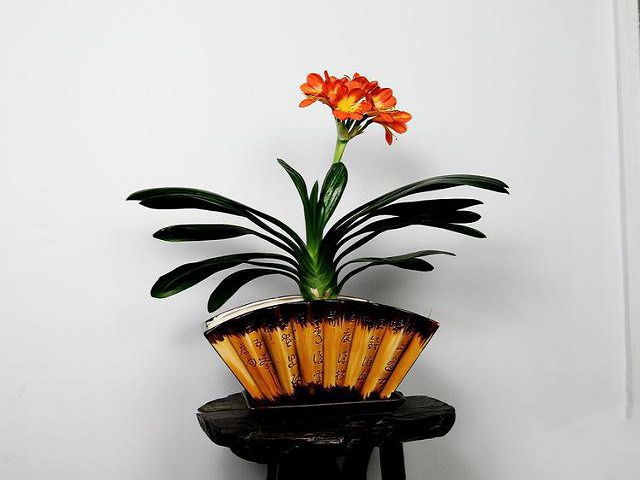How to deal with Clivia stiff seedlings, change pots to stimulate roots to stimulate Clivia growth and development
In the maintenance of the orchid, there may be stiff seedlings, the so-called rigid seedlings is the plant half-dead, stop the state of growth. And the gentleman orchid rigid seedling how to deal with it? The cause of rigid seedlings is generally basin soil consolidation, regardless of drainage and air permeability have become very poor, resulting in the root system of Magnolia can not adapt, so there will be the phenomenon of rigid seedlings.
1. Treatment methods of stiff seedlings of Cymbidium 1. Causes of stiff seedlings
There are many reasons for rigid seedlings, such as improper fertilization, improper watering and abrupt changes in the environment, most of which are on the cultivated soil, especially the soil hardening, which will lead to the inability of the root system to breathe and absorb water and nutritions. so that the orchid appears the condition of rigid seedlings.
2. Change the basin to promote the root
At this time, the plant is already half-dead, which is more lifeless than the dormant state. The first thing to do to awaken vitality is to change the pot and urge the root, that is, to take the plant out of the original flowerpot, then cut off the withered root in the plant's root system, and then soak it in a solution of naphthalene acetic acid and fungicides for 5 hours. then dry it.
Then prepare to transplant it into sterilized river sand for maintenance, then put it in a cool and humid place for maintenance, apply urea solution to Magnolia again after ten days, and appropriately add some plant hormones to promote vitality.
3. Rejuvenation in the basin
Wait until the magnolia in the river sand begins to grow new leaves or roots, and then re-basin it, the soil requirements are fertile and loose, to have good air permeability and drainage, and to increase the drainage layer at the bottom of the flowerpot. After putting on the pot, put it in a cool and ventilated place to slow down the seedlings, and then it can be managed normally.
4. Loosen the soil regularly
Know how to deal with the stiff seedlings of Cymbidium. In order to avoid the occurrence of stiff seedlings again, we must pay attention to the maintenance of the soil, loosen the soil regularly, change the basin every one or two years, and don't overwater and fertilize.
Second, four tips for the maintenance of magnolia 1. Appropriate watering
Watering the orchid should follow the principle of dry and thorough watering. Spring and autumn are the peak growing season of the orchid. To keep the basin soil moist, you can water once every two or three days; in summer, you should water every day and often spray water to the leaves; in winter, the orchid will stop growing and can stop watering. In order to keep the basin soil moist, it can be covered with a layer of moss to moisturize the soil.
2. Suitable lighting
The gentleman orchid likes the semi-overcast environment, and the strong light must be properly shielded in summer to avoid sunburn disease. In winter, it is necessary to replenish the light properly, so that it can produce beautiful flowers. When spending the winter indoors, it is best to put it in the sunny place to make up the light indoors.
3. Control the temperature
The most suitable temperature for the growth of Cymbidium is between 15 and 25 ℃. If the temperature reaches more than 30 ℃, the leaves will wither and die if they do not cool down for a long time. If the winter temperature is below 10 ℃, it will grow slowly, and if it is below 5 ℃, it will enter the dormancy period.
4. Rational fertilization
During the growth period of Cymbidium, thin fertilizer and water can be applied every half a month or a month, mainly nitrogen fertilizer, to promote the growth of leaves. In autumn, more potash fertilizer was applied to promote the growth of roots, stems and leaves and improve the ability of cold resistance. Before flowering, potassium dihydrogen phosphate solution can be sprayed to promote flowering.
Related
- Is the orchid suitable for indoor use? Is it good for the body?
- How to prevent the empty root of orchids?
- What to do after the crab claw orchid is withered?
- Why are the leaves of orchids always yellow? Fertilizing and watering.
- Can the root of the gentleman orchid be saved if it is rotten?
- Diagnosis and treatment of cotton-blowing beetle insects in Cymbidium
- There is a way for a gentleman's orchid to rot.
- What is the most suitable temperature and humidity for the orchid?
- How to raise a gentleman's orchid? Cultivation techniques of Cymbidium
- How to prepare the nutritive soil for the cultivation of Cymbidium



